What are the best AirPods to buy today? I've used every model since 2016, and here are my recommendations
AirPods Pro 3, AirPods 4 or AirPods Max? Here's how I'd spend my money
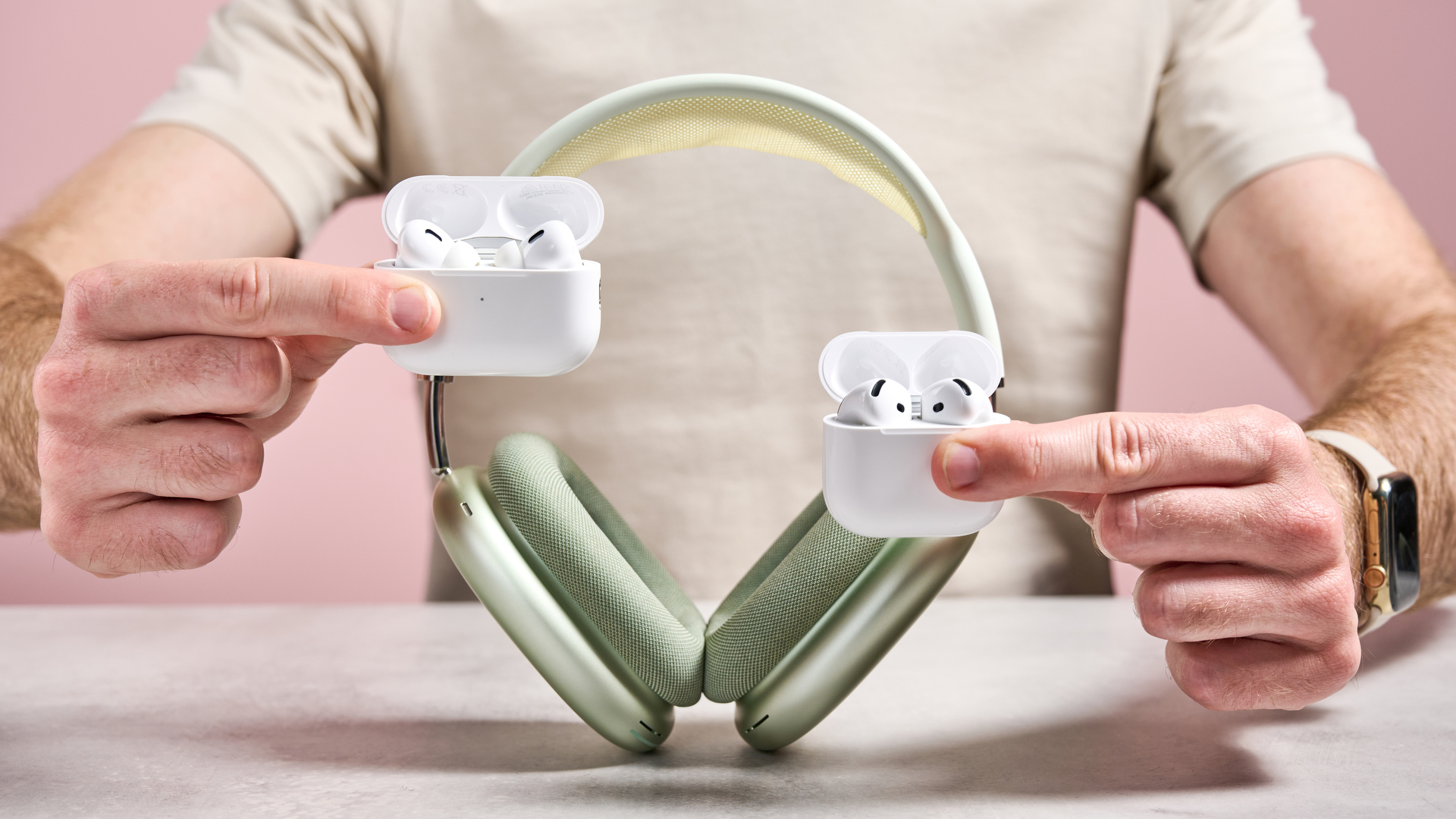
So, you've come looking for recommendations on the best AirPods to buy – which I'm going to presume means you're already settled on AirPods, and really you're just asking which ones are the best value for money, and what kind of price you should be paying.
I've tested every AirPods model since they first appeared in 2016, and I use a pair every day as my main headphones, even though I have access to most of the best earbuds on the planet. I’m TechRadar’s foremost AirPods aficionado, so I'm going to break down the AirPods range and my buying recommendations, to make it super-easy for you to pick the right ones.
We're in the middle of in-depth testing of AirPods Pro 3 right now, so I've haven't totally overhauled this guide yet to include them – but also, at the moment, I still think the AirPods model most people should buy is the AirPods Pro 2, though only if you find them at the right discounted price, while stocks last.
However, there are good reasons to choose other models. Here's a short breakdown before I get into more detail.
- Best AirPods overall: I think most people should buy the AirPods Pro 2. They have basically the best features of all AirPods, and they're regularly available for under $160 / £180 / AU$300. Read in-depth about the AirPods Pro 2.
- Best cheap AirPods: The AirPods 4 are my pick, as long as you can find them for under $100 / £100. They have all the core AirPods features, and are light and super-reliable. Read in-depth about the AirPods 4.
- Best over-ear AirPods: The only option here is the AirPods Max, and they're great for sound quality and noise cancellation. They're very expensive, though. Read in-depth about the AirPods Max.
The AirPods I recommend you buy
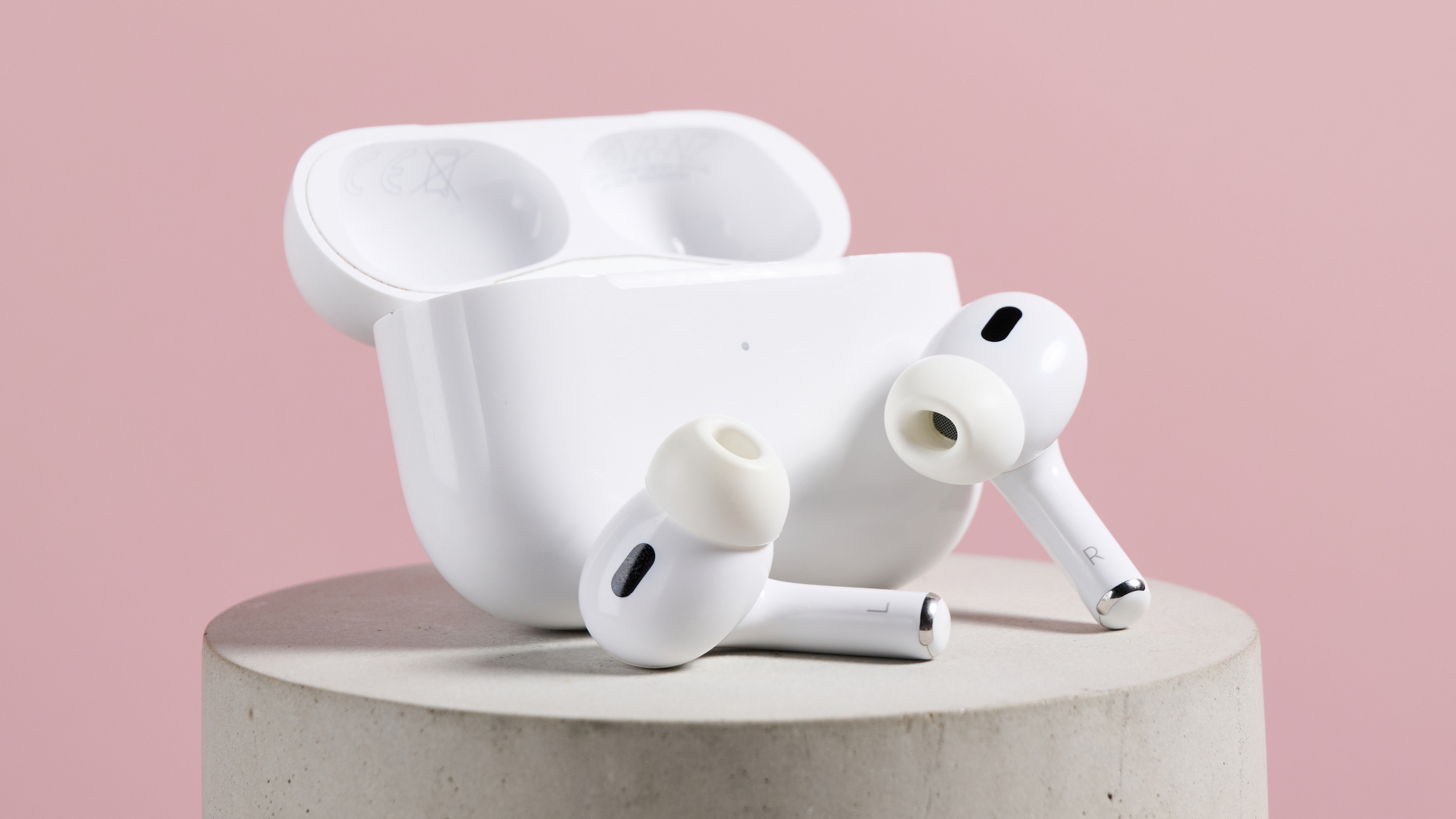
Specifications
Reasons to buy
Reasons to avoid
The 3 reasons you should probably just buy these
Why you can trust TechRadar
✅ You can pay mid-range prices for premium earbuds
Officially, the AirPods Pro 2 cost $249 / £229 / AU$399, and that's actually a very fair price for earbuds with these features, especially considering how they've been updated and improved since their launch. But you don't even need to pay this price, because they regularly fall to under $170 / £180 / AU$300 – the lowest they've been in the US is just $149. These deals are available every few months, so if you don't need to buy right away, just wait a while. At that price, I'm telling you, they're a steal.
✅ The sound quality and noise cancellation are excellent
The price wouldn't matter if they sounded like you're listening to your music through a bathroom wall, but the AirPods Pro 2 have great dynamic range from bass to treble, detailed and energetic music reproduction, and very strong active noise cancellation (although AirPods Pro 3 are notably even more effective).
✅ They're a future-proof option
The AirPods Pro 2 have the most features of any AirPods model (including the more expensive AirPods Max, and they're equal to AirPods Pro 3), and use Apple's most advanced headphones chip – this means they're likely to still be upgraded with more features in the future, just as they were in iOS 26. So, even if you don't think you need features such as on-ear volume control or the hearing aid mode now, you won't need to buy a new pair if you decide you want those in the future.
Read our full AirPods Pro 2 review
Here's what I think of the other AirPods
Here's my verdict on the other options – including why you might buy them over the AirPods Pro 2.
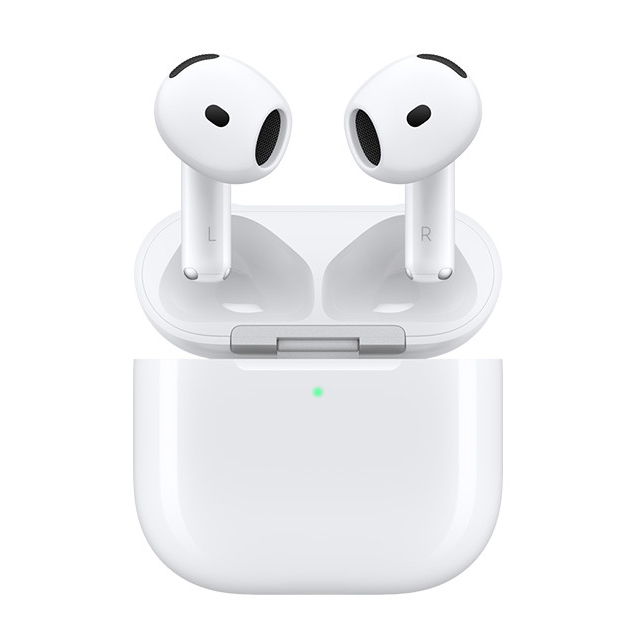
✅ I'd buy them if…
… you want the cheapest option. These have fallen under $100 during sales events, and they're decent value at that price if you want want AirPods' ease of use and good call quality.
❌ Why not buy them?
No in-ear seal and no noise cancellation means they let in tons of sound, and they are missing some features I think are basic, such as on-ear volume control. The sound quality is also notably softer than the others here.
Read our full AirPods 4 review
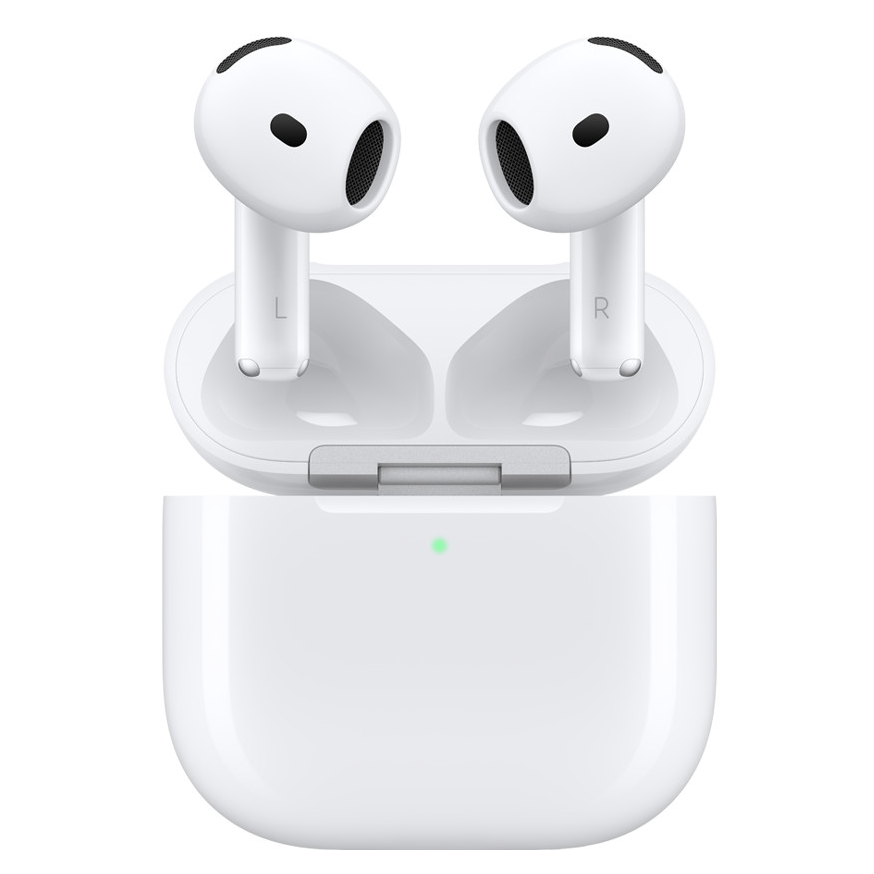
✅ I'd buy them if…
…you don't like an in-ear seal from earbuds, but still want good sound. These don't go into your ear canal, sitting just outside it securely. Despite that, they sound very good, and the noise cancellation makes them better for noisy environments than regular AirPods 4.
❌ Why not buy them?
AirPods Pro 2 cost only a small amount more, but have more features and even better sound. These are worth it, though, if they fall under $139.
Read our full AirPods 4 with Active Noise Cancellation review
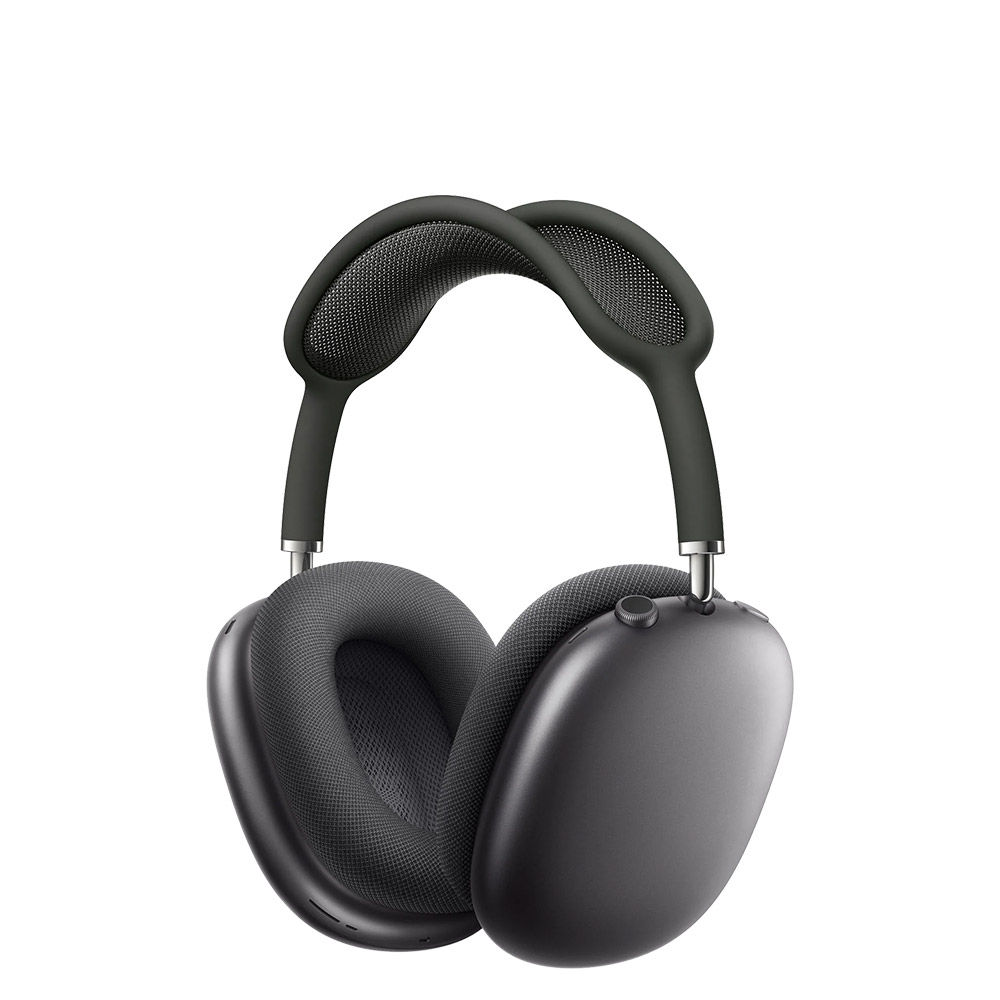
✅ I'd buy them if…
…you want headphones with the best sound and noise cancellation. Apple's only over-ear headphones use bigger speakers for expansive sound that's finely detailed, with superb noise-blocking power.
❌ Why not buy them?
They're very expensive, yet lag behind the AirPods Pro 2 on many features, due to their older chip. They’re a more attractive buy if you can find them for under $399. They also use a strong clamping force to stay on, which not everyone loves.
Read our full AirPods Max review

I've been testing and reporting on cutting-edge audio products since 2012, stretching back to iPod dock speakers and early neckband wireless earbuds. I've used every pair of AirPods released to date personally, and I've tested Apple's Beats products too. I've used the AirPods Pro 2 every day basically since their launch, though my AirPods Max have been supplanted by the Bose QuietComfort Ultra Headphones.
What about AirPods Pro 3?
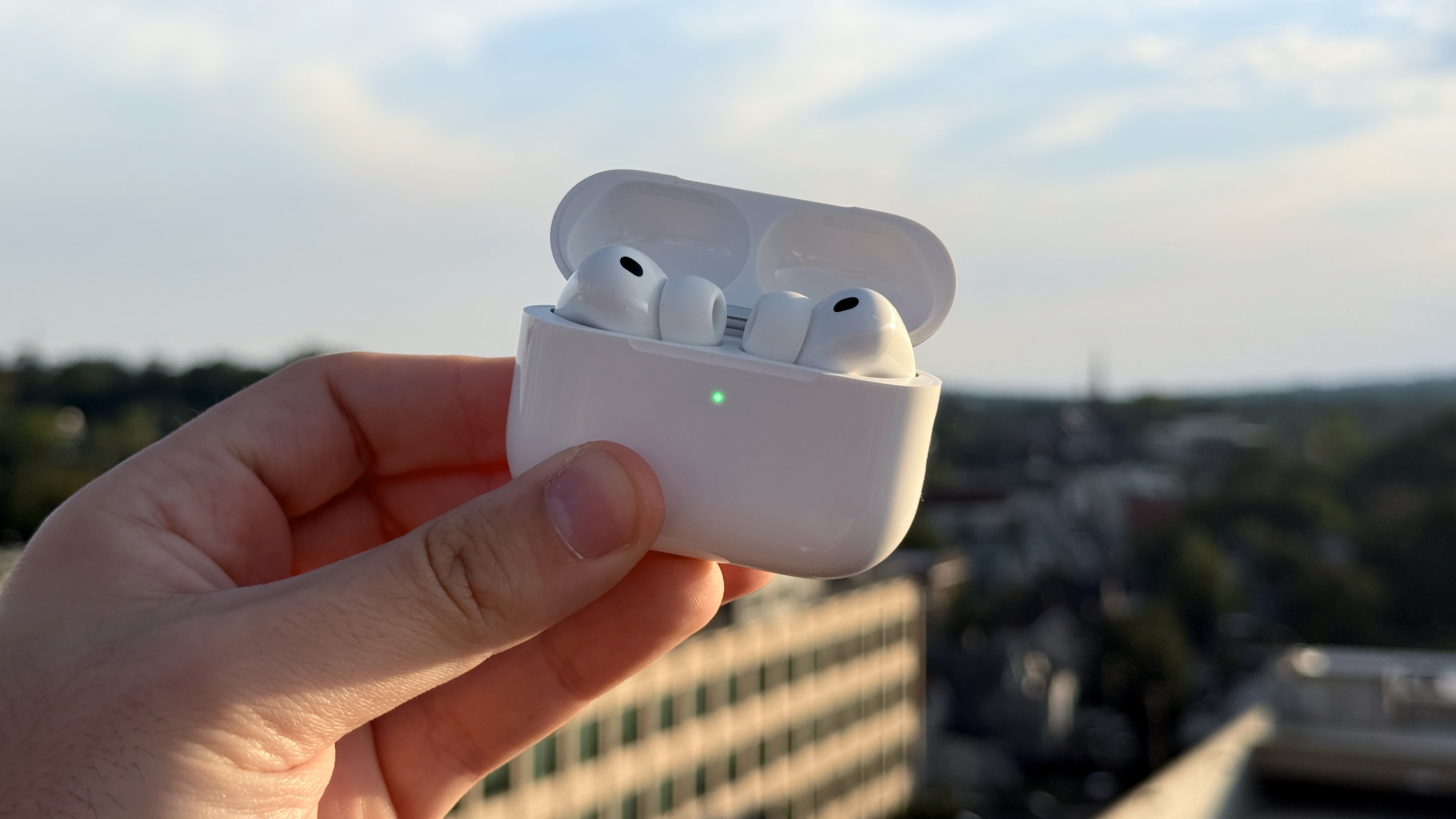
Apple has now launched the AirPods Pro 3, and they're an interesting upgrade over AirPods Pro 2. They deliver clear changes in four key areas: music reproduction, active noise cancellation, the fit, and battery life.
I'm going to start with battery life, since it's straightforward. The new model delivers eight hours from a single charge of the buds with ANC turned on, which is up from six hours in AirPods Pro 2. They can actual do 10 hours with Transparency Mode turned on for Hearing Aid mode, which is a great upgrade. The case, however, actually hold slightly less charge – AirPods Pro 3 are now good for 24 hours of total use, instead of 30 hours for AirPods Pro 2.
Active noise cancellation is also clear cut: it's an obvious and significant upgrade over the previous model. Its ability to reduce higher-frequency noises in particular has been much improved, meaning the total reduction in sound is impressive even with nothing playing, or just something simple like a podcast. With music playing, you can walk right along a busy road and hear nothing – not just a reduction, but truly zero outside sound.
One of the reasons for this improvement is Apple's new "foam-infused" ear tips, which form a firmer seal inside the ear canal. Now this is where the change to the overall fit comes in too. Apple has changed the shape of the earbuds slightly, which is all good. But the ear tip really does heel harder in the ear, and some people online have said they found it harder to the point of being uncomfortable.
I find that I can feel the AirPods Pro 3 in my ears much more than AirPods Pro 2 because of the ear tips – I could literally forget I was wearing the older model and its softer tips, but that's not really happening with the new version. There's a trade-off here with the improved noise cancellation – I don't mind it, but I can totally understand people not enjoying the sensation.
Finally, the sound quality has also been a point of some contention online. The new model is strong in bass precision and reproduction of the lowest sub-bass frequencies, which gives it more resonance at the low end. At the same time, treble is crisper and clearer. Some buyers say they think the balance is off compared to AirPods Pro 2, with mids lost a little among these changes.
I personally think the sound is an upgrade, and I'm happy with the new sound signature – the richer bass especially helps the scale and realism of sounds, because it can reproduce a fuller range of low-end frequencies, but doesn't overemphasize them, in my opinion. However, I don't think it's a huge upgrade – I wouldn't recommend people move from AirPods Pro 2 to 3 just for sound improvement.
The impressive thing is that Apple kept the same $249 price for AirPods Pro 3 in the US, and actually lowered the price in the UK by £10, to £219. The price in Australia rose by AU$30 to AU$429.
Over the next few months, AirPods Pro 2 stock is still available (officially, they're discontinued, so this will run out), which means you'll be able to buy both models – so are the AirPods Pro 3 the obvious model to get, given their upgrades, unless you don't like firm ear tips?
Well, as I mentioned above, you can often find AirPods Pro 2 with obscene discounts. If you can find AirPods Pro 2 for a record-low price (especially for $100 cheaper than the new model, in the $149 region), I think I'd be tempted to get the older one, given that the upgrades aren't total game-changers in most cases.
I'll also briefly mention the rumors of AirPods Max 2 here, for people who are always looking for what's next. The latest reports suggest that a 2027 launch is provisionally on the cards, but that could obviously change. The only real hint at any upgrades in the new model are that they'd be lighter, but that's not much to go on.
I think that if you're considering buying the AirPods Max, there's no clear reason to wait for AirPods Max 2 right now – you could be waiting quite a while, and there's no guarantee they're actually coming, or that if they are, they'll be a major upgrade.
AirPods comparison chart
AirPods features explained
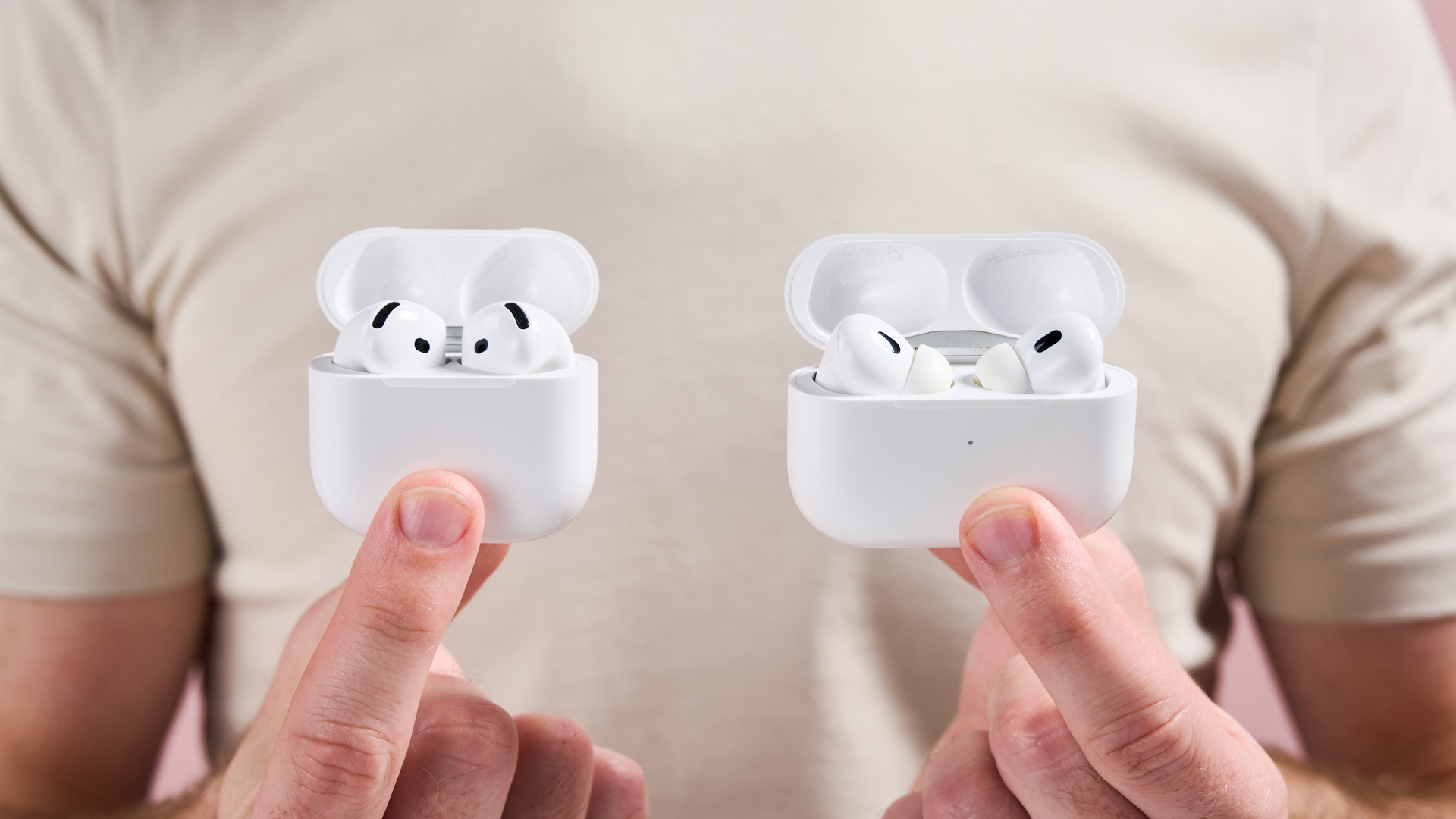
Ear fit design
Literally, how the AirPods will fit in or around your ears. The AirPods Pro 2 have a silicone tip that goes into your ear canal, and this is key to them staying in place. The AirPods 4 models don't go into your ear – they sit just outside it in your 'conch', which some people find more comfortable. The AirPods Max have a cushion that sits around the ear (circumaural), so don't require anything to touch your actual ear at all.
Processor
The chip used inside the AirPods model. This largely determines which of the features here it can support, and how powerful the audio processing is. The chip also dictates which wireless connectivity options are supported. A higher number means a newer, more modern, chip.
Active noise cancellation
ANC, as we often call it, is a digital system for suppressing exterior sound, so that you can hear what you're listing to more clearly in noisy environments. We have a full guide to what active noise cancellation is, but the short version is that microphones on the AirPods listen to the sound frequencies around you, and turn those into a digital sound signature. They then calculate the opposite of those frequencies, and mix them into to the sound that's playing in your ears, causing those opposite frequencies to 'cancel out' the sound around you, meaning you're left with only your music, podcast or movie audio. It's never 100% effective, but it makes a huge difference, and is good for your long-term hearing health by reducing the volume you need to listen at.
⬇️ Expand to read all feature explanations
Transparency mode
An alternative to active noise cancellation that doesn't cancel out the sounds from outside, but instead uses the microphones to actively mix the sounds around you into what you're hearing. It enables you to hear those sounds more clearly than if you just turned ANC off, and the idea is that you'll likely use it in short bursts for when you need to hear something happening nearby.
Adaptive Audio
Another variation of active noise cancellation that is mainly like Transparency mode, except it's designed to still cancel out some sounds around you, while letting others through. It will add cancellation if there's suddenly a very loud noise, for example, to save your hearing. It'll also block out droning air conditioner sounds, as an example, because you don't really need to hear those. But otherwise, you'll be aware of what's happening around you.
Conversation Awareness mode
Another option for active noise cancellation, which will switch into a Transparency mode if the AirPods detect that you're trying to speak to someone – they assume that you'd like to hear the reply, so will activate Transparency mode for a short time automatically.
Personalized Spatial Audio
Spatial audio is a technology that makes sound seem like it's coming from a 3D space around you, rather than from two speakers right next to your ears. All of the current AirPods models support head-tracked spatial audio, which adds more immersion by changing the 3D sound in response to your head movement, meaning that movies can sound like you're sitting in a movie theater, where sounds stay 'static' in 3D space as if coming from speakers in a room, even when you turn your head. The 'personalized' aspect means that you can use your iPhone to take a 3D map of your ears, to make this mode as effective as possible.
Fast pairing
All AirPods can pair instantly with your Apple devices when you take them out of the box, popping up a screen on your iPhone (for example) and asking if you want to connect, so you don't need to figure out a more old-school Bluetooth pairing process. Once paired with one of your Apple devices, they're automatically paired with all of them.
Automatic Switching
Remember how I just said AirPods automatically pair with all your devices? If your AirPods were last connected to your iPhone, but then you start a movie on your Mac while you're still wearing the AirPods, the AirPods will automatically and instantly switch to being connected to your Mac instead, picking up that audio.
Voice Isolation
An audio processing feature to boost your voice's clarity on calls, cutting out ambient sounds around you so that you can be heard more clearly. It's always active automatically in the background.
Wired audio option
AirPods are all designed to be used wirelessly mainly, but the AirPods Max can also be used with a wired connection to any audio device. The latest USB-C version can receive lossless Hi-Res Audio when connected to a USB-C port on a device, but to connect to a 3.5mm jack requires a 3.5mm-to-USB-C cable, which Apple sells separately. This latter option won't support the same kind of lossless Hi-Res support, because it requires the sounds to go through a conversion process, but it's still high-quality. The AirPods earbuds don't support any kind of wired connection.
Wear detection
All AirPods models will pause your music/movie/podcast when you take them off, using a combination of sensors to detect when they're being worn and when they're not.
Find My support
Apple has an app called 'Find My' that can locate lost devices, including AirPods. Different AirPods models have different tools to make this happen, though. The AirPods Max and AirPods 4 have the most basic version, which means you can see their most recent location if someone with an Apple device has passed within wireless range of them recently. You can also make the earbuds play a loud-ish sound if one is connected to your phone but you've lost it in a bag, say. The AirPods 4 with ANC and AirPods Pro 2 add to this with a speaker built into the charging case, and you can tell the case to make a noise if you can't see it.
Finally, the AirPods Pro 2 have the most advanced option, which is ultra-wideband (UWB) location finding. This tech enables your iPhone to literally point an arrow in the direction of your missing AirPods, with a range estimate, as long as you're within wireless connection range.
Controls
The two AirPods 4 models can be controlled while you're wearing them by squeezing their stems to start/pause playback, or holding to switch audio modes or invoke Siri, among other options. The AirPods Pro 2 have these controls as well, but also include the ability to swipe up and down the stems to change volume. AirPods Max have a dial on them to control volume, and you press it to play/pause. A second button switches ANC modes.
Water resistance
The IP54 rating of the AirPods earbuds models means they're certified to withstand splashing and sweat, so they should be fine for the rain or gym use – through prolonged heavy rain or immersion in water aren't recommended. The AirPods Max are not officially rated to get wet in any way, and don't officially offer sweat resistance. Lots of people use AirPods Max in the gym because of their solid fit, but doing this may shorten their life.
Studio Mic mode
This is a new feature coming in iOS 26, launching later in 2025. It's designed to offer even higher-quality voice recording than the current Voice Isolation mode.
Camera control
Another feature due to arrive in iOS 26, you'll be able to take a picture or video on your iPhone remote by squeezing your AirPods' stem.
Live Translation
This feature enables you to press the controls of both AirPods stems at the same time to activate the live translation of the worlds of someone speaking to you. AirPods' microphones will pick up the language, it'll go to your iPhone to translate instantly using Apple Intelligence, and then you'll hear the translated words in your ears (with noise cancellation blocking you from hearing the original speech). If you speak back, your phone will display your words in the language of the other speaker. If two people both wearing AirPods use this feature, you won't need the iPhones – everything will be translated back and forth live. Not all languages are supported – Apple says: "Live Translation on AirPods is available in English, French, German, Portuguese, and Spanish, and will be coming to four more languages by the end of [2025]: Italian, Japanese, Korean, and Chinese (simplified)."
Hearing Aid mode
This is exclusive to AirPods Pro 2 because it requires the noise-isolating physical seal that the in-ear tips provide. It's exactly what it sounds like: the AirPods Pro 2 can function as an officially certified hearing aid for mild to moderate hearing loss, as long as they've been approved for this in your country (they have been in the US and UK). You'll take a hearing test before using it right on your iPhone, and then your AirPods will build a custom sound profile tailored to your personal level of hearing loss. Here's more information about AirPods Pro 2's hearing loss features, and here's a testimonial from the hearing-impaired father of TechRadar's Managing Editor Jake Krol.
Live Listen Audio
This accessibility feature for the hard of hearing uses your iPhone's microphone to pick up sound around you, amplifies it, and sends it to your AirPods. The idea is to make it easier to participate in group conversations or in another situation where you can sit close to source of the sound.
Headphones Levels
You can set a maximum volume that the AirPods are allowed to reach (regardless of how many times you press the volume control), to help protect your hearing health, or to stop them becoming painfully loud if you have a sensitivity to louder volumes.
Headphones Accommodations
A range of adjustments for how the AirPods reproduce sound that can make it clearer if you have some hearing issues. You can also make adjustments to how much ambient sound the Transparency mode lets in here.
Conversation Boost
A mode designed to pick up on the speech of someone talking right in front of you and boosting that within the AirPods' sound mix, cutting back on ambient sound. The idea is that people with hearing issues who struggle to separate speech from background noise will find it easier to hear a one-on-one conversation.
AirPods Pro 2 in-depth verdict
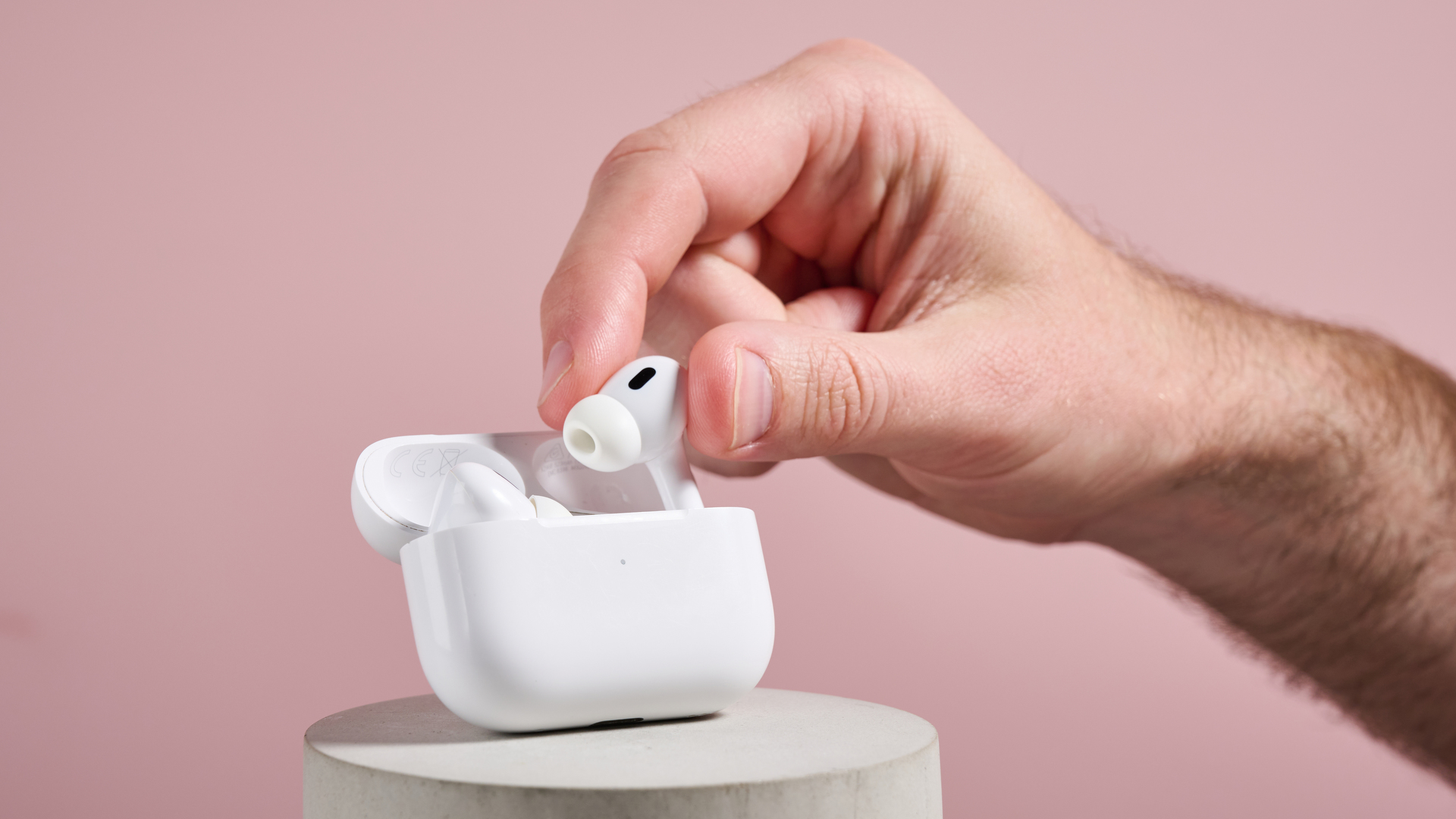
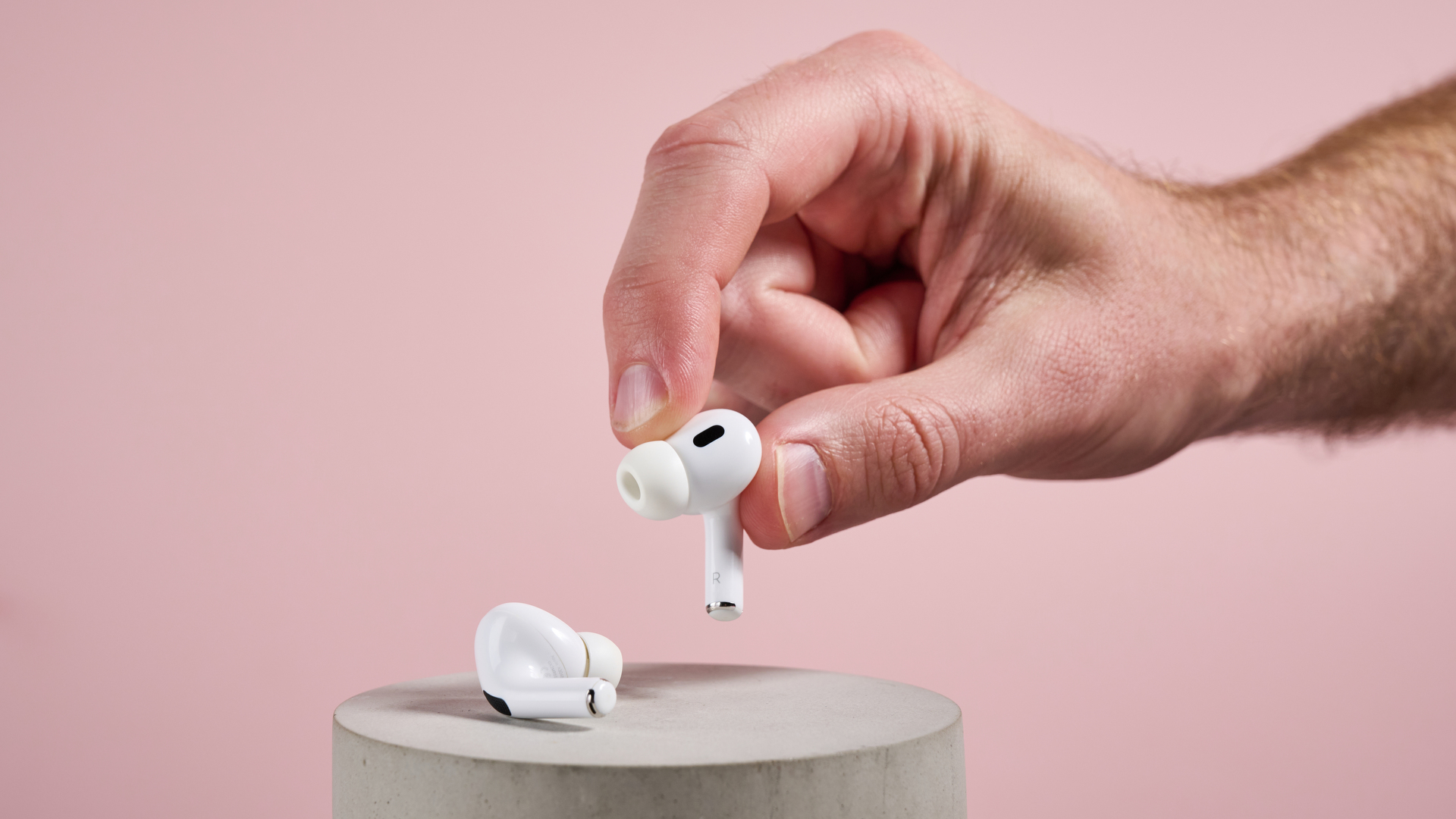

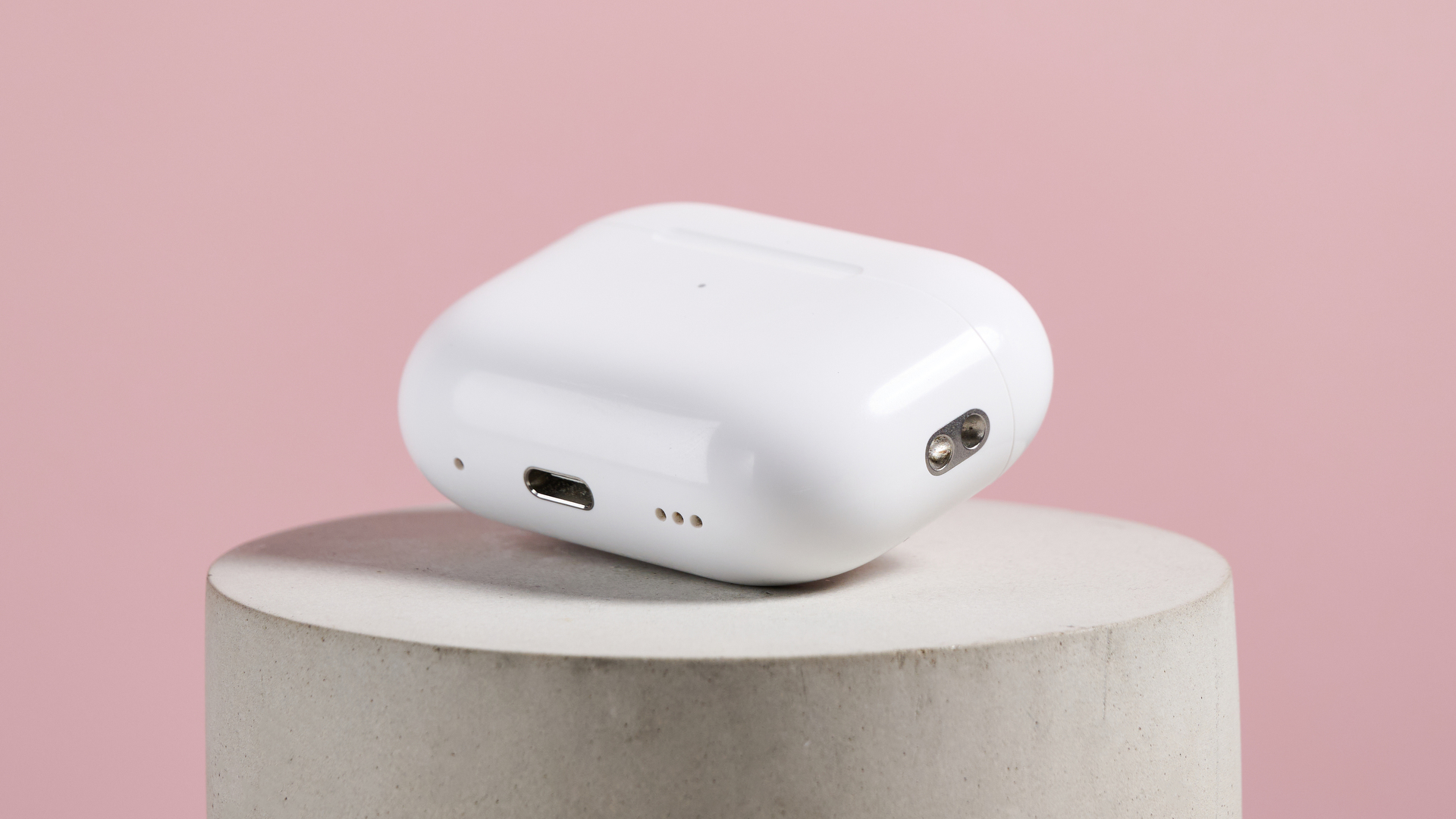

Specifications
Reasons to buy
Reasons to avoid
Why the AirPods Pro 2 are still my everyday earbuds
As Managing Editor for TechRadar’s AV section, I'm not short of elite earbuds I could start using on a day-to-day basis. I choose to keep using the AirPods Pro 2, as I have done since 2022, because of how well they hit the target of what I want from a pair of earbuds.
Let's talk about an element that I think is under-discussed: the design. Their familiar 'stalk' design enable them to fit in a very slimline case, which means I can slip it into my pocket and completely forget they're there. A lot of rival earbuds have a thicker case that you can feel more when you move around, or that looks odd, but the AirPods' case is ideal. It's also really high-quality and tough.
Another factor is just how light and comfortable I find them. The stalk design means their center of gravity is close to the ear, rather than ones that stick out more. They also rank among the lightest of the high-end earbuds, so I really don't 'feel' them in my ear very much.
On top of that, I'm a huge fan of the squeezy controls on the stem. They even work with gloves, unlike touch controls, and you're not pushing the buds into your ear when you use them, unlike some button controls. Swiping to change the volume doesn't work with gloves on, but is generally very easy and reliable.
I also simply cannot and will not live without the un-loseable case of the AirPods Pro 2. All AirPods support a Find My option of some kind, so they can tell you roughly where they are whenever anyone with an iPhone passes nearby, but the AirPods Pro 2's case has ultra-wideband (UWB) precise location tracking for when you're nearby, too. Your iPhone can literally point you towards your lost AirPods case using an arrow and a distance indicator. It's fantastic, and has saved me so much time over the years.
There's also a speaker in the case, so you can make the case emit a noise to make it easy to find. And each earbuds is trackable too, and can be made to emit a loud noise. Again, I've made good use of these features, and I fear for using anything with a less strong location features.
Of course, I probably would switch if the AirPods Pro 2 didn't sound good, but they really do, from full-yet-controlled bass through to complex and well-detailed mid-range, and then clear treble that dances out of the denser parts of the mix. Over the years, I've tried them with basically every type of music, using them to chill out with classical, to pump up with hard electro, and everything in-between.
There are better-sounding premium earbuds out there, but the AirPods Pro 2 still really hold their own even three years after launch – and especially for $150-$170 you can find them at.
It's the same story with the active noise cancellation. The ANC has been bettered by the likes of the Bose QuietComfort Ultra Earbuds 2nd Gen, but it still ranks up there with the top tier, and is incredibly effective at cutting down droning sounds, and clamping down on chatter, and transport or café noise – more than effective enough for my commutes, or for hearing my podcasts better while washing dishes.
I'm also a huge fan of Apple's head-tracked spatial audio for movies, where the AirPods and iPhone/iPad combine to create a virtual soundscape that feels like you're in a home theater, where it sounds like you're listening to speakers are in set positions around you to match the position of the screen you're watching.
It means the sound doesn't feel like it's coming right into your ears, and is just a really pleasant way to watch things – especially if you're stuck on a plane for a long time (I've used them on many flights, both short and long-haul).
The sound signature of AirPods Pro 2 is also well-suited to movies, offering great impact and dynamic range while keeping speech clear – again, I've watched a ton of films on these while on train journeys, and I never feel like it's an audio hardship.
I don't have need to use the new hearing-aid features of AirPods Pro 2, but we have given them to people with mild hearing loss, and they really made a difference. Read my colleague Jake's experience with giving them to his father for a personal account.
They also just do everything else well that AirPods overall promise, such as auto-switching between my iPhone and my MacBook – again, something I do all the time to switch from listening to podcasts to taking a work video call.
Battery life is the area where I'd most like to see an improvement, because I have occasionally hit the sad noise they make when they're running dry after a solid morning of work where I didn't get interrupted by anyone. But it's not very common, and they still have the best battery life of the earbuds-style AirPods.
AirPods 4 in-depth verdict

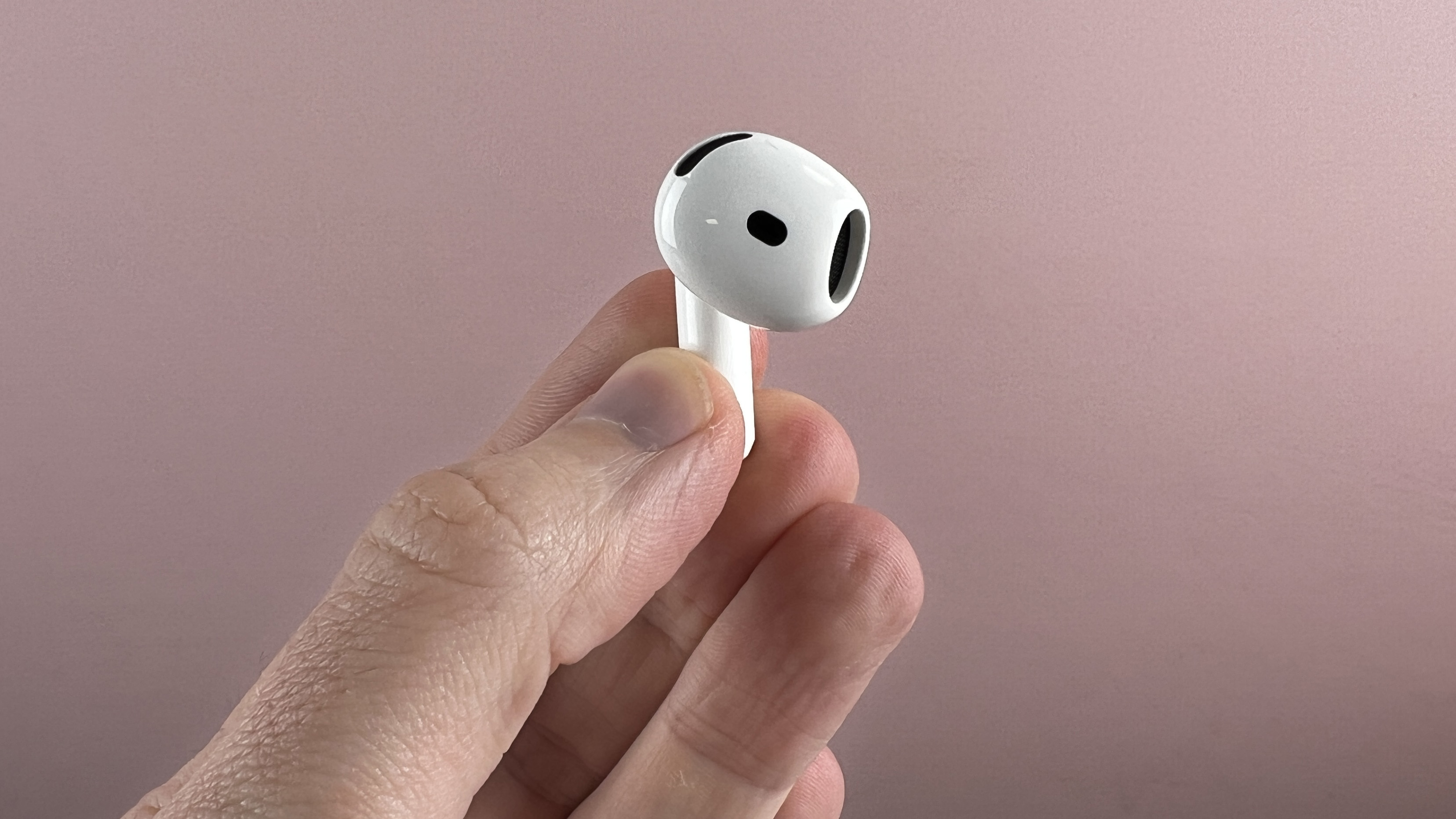

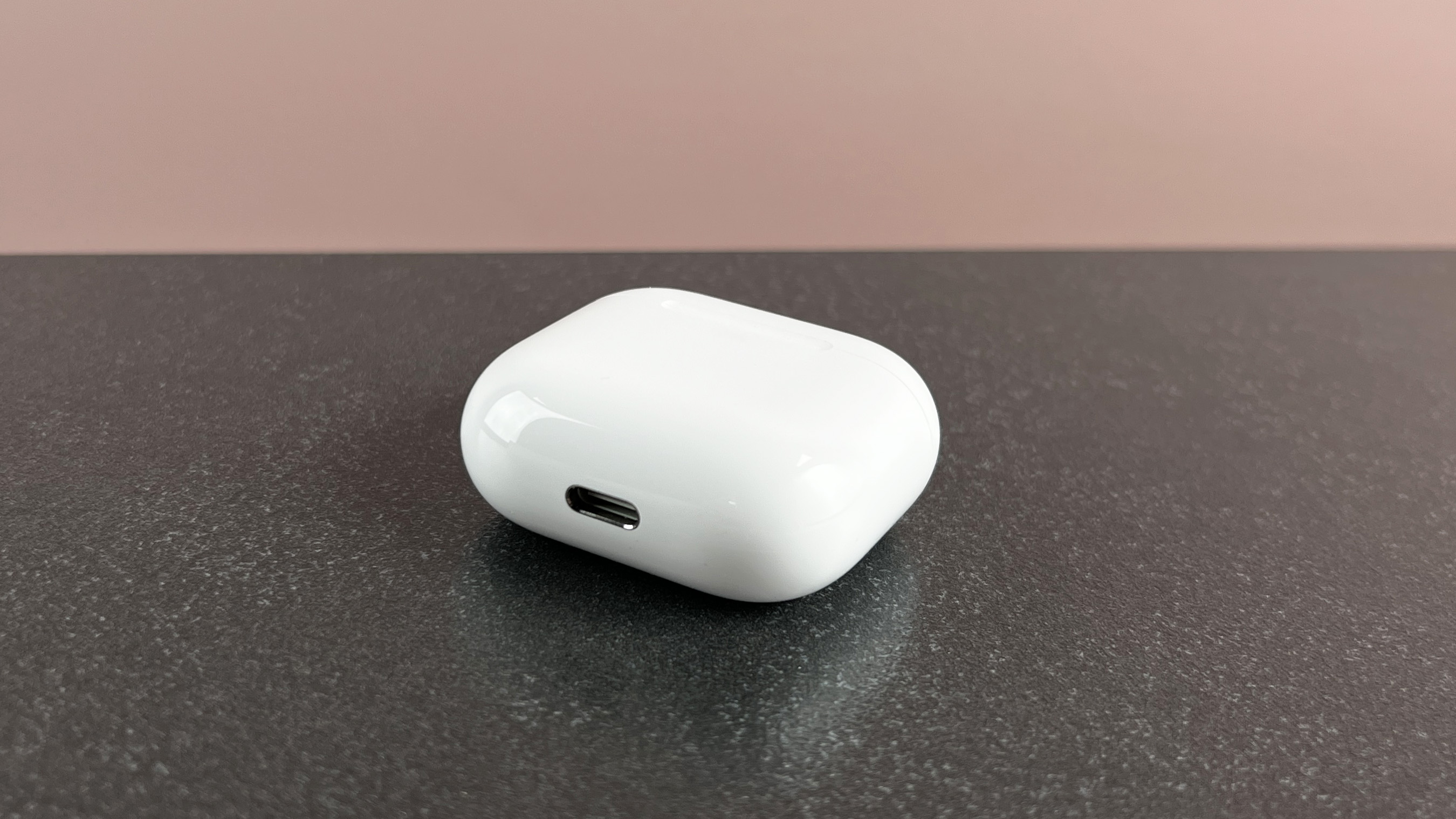
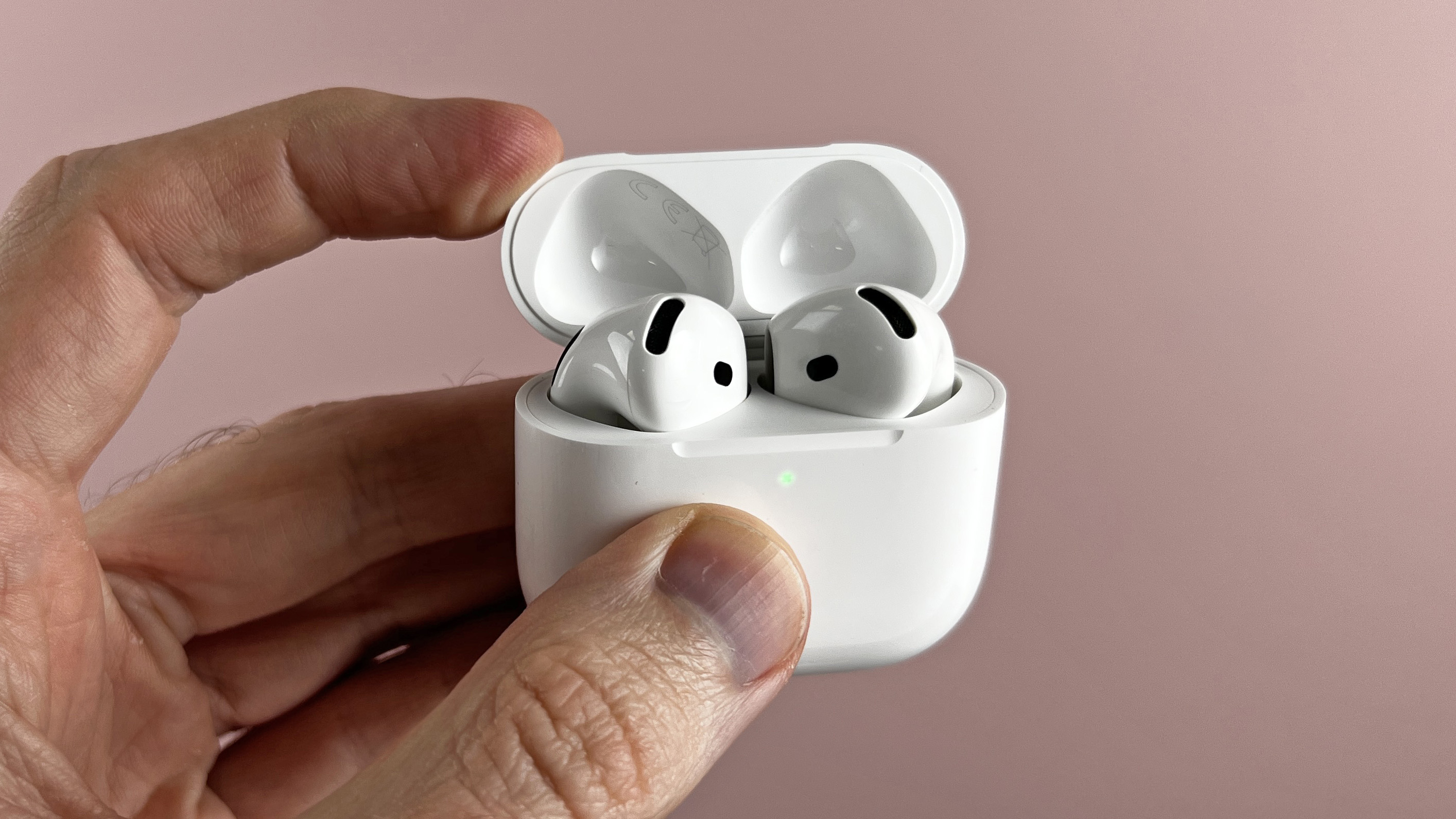
Specifications
Reasons to buy
Reasons to avoid
When Apple's new cheapest AirPods launched in 2024, I tested them for several weeks in direct comparison with both the AirPods 4 with ANC (i.e., the slightly fancier model) and the AirPods Pro 2 to try to balance the value of all three.
In my AirPods 4 review, I concluded that for the price, you can do better for sound quality and certain features – but I was talking about the wider world of earbuds. For example, I'd rate the Nothing Ear (a) over them in terms of audio prowess, and these also offer strong active noise cancellation – and I still feel that way.
However, since this is an AirPods-specific guide and you've read this far already, I'll assume you really want to know whether these are good enough, or whether you should spend more for the higher-tier versions of AirPods.
The short answer is that I have no problem recommending them if you find them at the $99 / £99 or under price that they've started falling to during sales events.
I find the sound to be a little soft – it lacks details compared to the AirPods 4 with ANC, and even more compared to the AirPods Pro 2 – but the overall dynamic range is good, and they're perfectly enjoyable to listen to. Spatial Audio works well enough here too, though also suffers from the lack of detail.
They stayed in my ears well, and even though I generally haven't found this type of outer-ear fit in AirPods to be especially comfortably in my ears, these are the best model so far in that regard.
And yes, this kind of ear fit is quite leaky, allowing lots of outside sound in. That's what some people actually want from it – in order to stay aware while walking or working in an office – but it didn't take much outside sound to overwhelm them in my experience. Obviously, when I tested them walking near traffic or while riding public transport, that was especially hard on them, but even just the sound of washing-up can make it hard to hear a podcast.
The addition of active noise cancellation in the AirPods 4 with ANC makes a big difference, as we'll come to in a moment – but the AirPods 4 are missing a few other features compared to those earbuds as well. Wireless charging and a speaker in the case (so they're easy to locate using the Find My app) are the two I missed the most.
The wireless charging works with MagSafe or regular Qi chargers, but also with the Apple Watch charger, which I find is incredibly useful to slim down the amount of chargers I need when traveling.
But these AirPods do all the really important basic-life-improvement stuff you want from AirPods, such as instant switching between all your Apple devices, super-reliable connections to your iPhone, good microphone quality for calls, and more. And though Apple quotes a very disappointing battery life for them, I actually tested this by running them down from 100% to 0% and found they last way longer than promised, so that's good too.
If you want the cheapest option, I've no problem recommending them – but I do think you'll get a more from spending more.
AirPods 4 with Active Noise Cancellation in-depth verdict

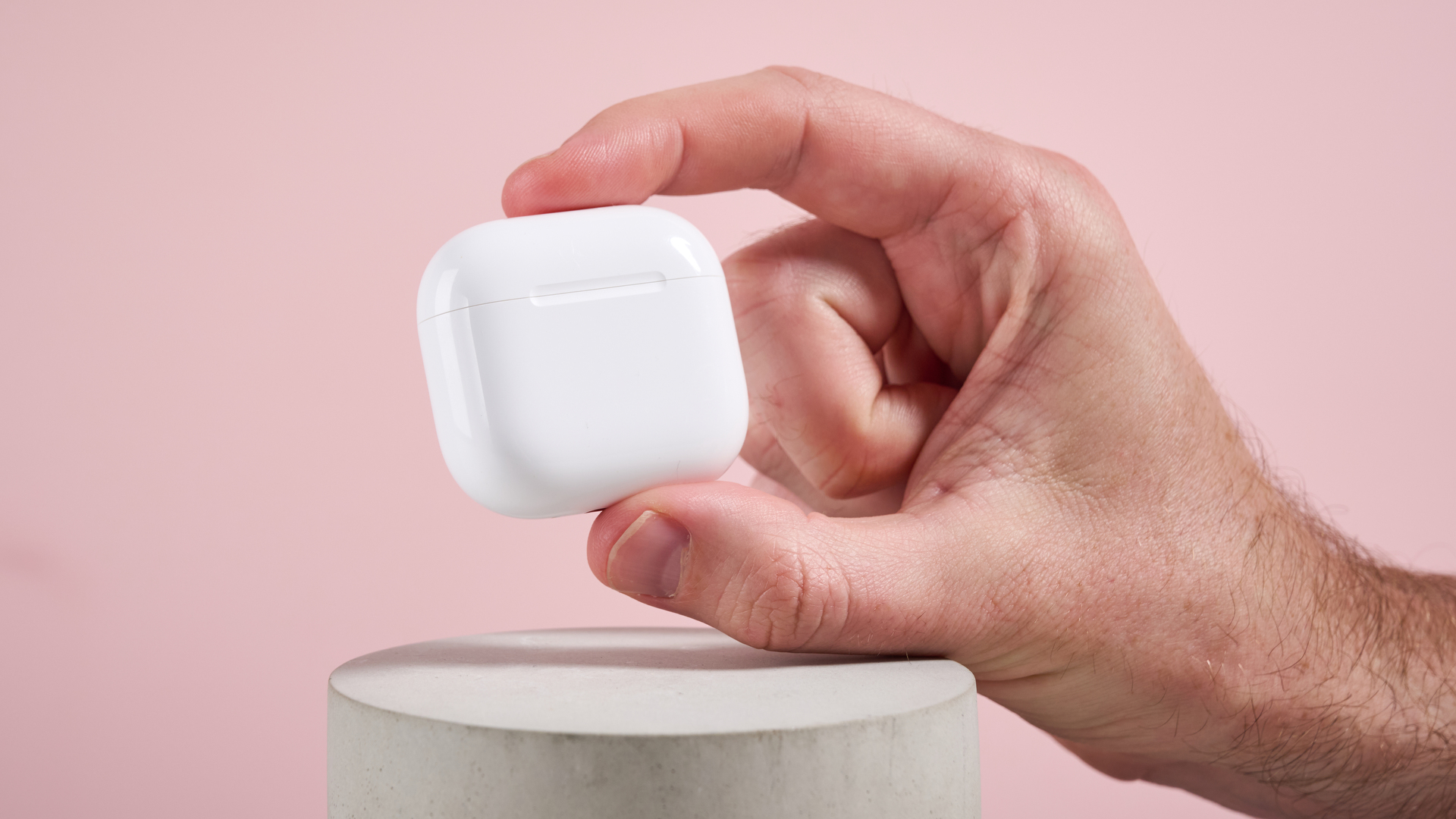
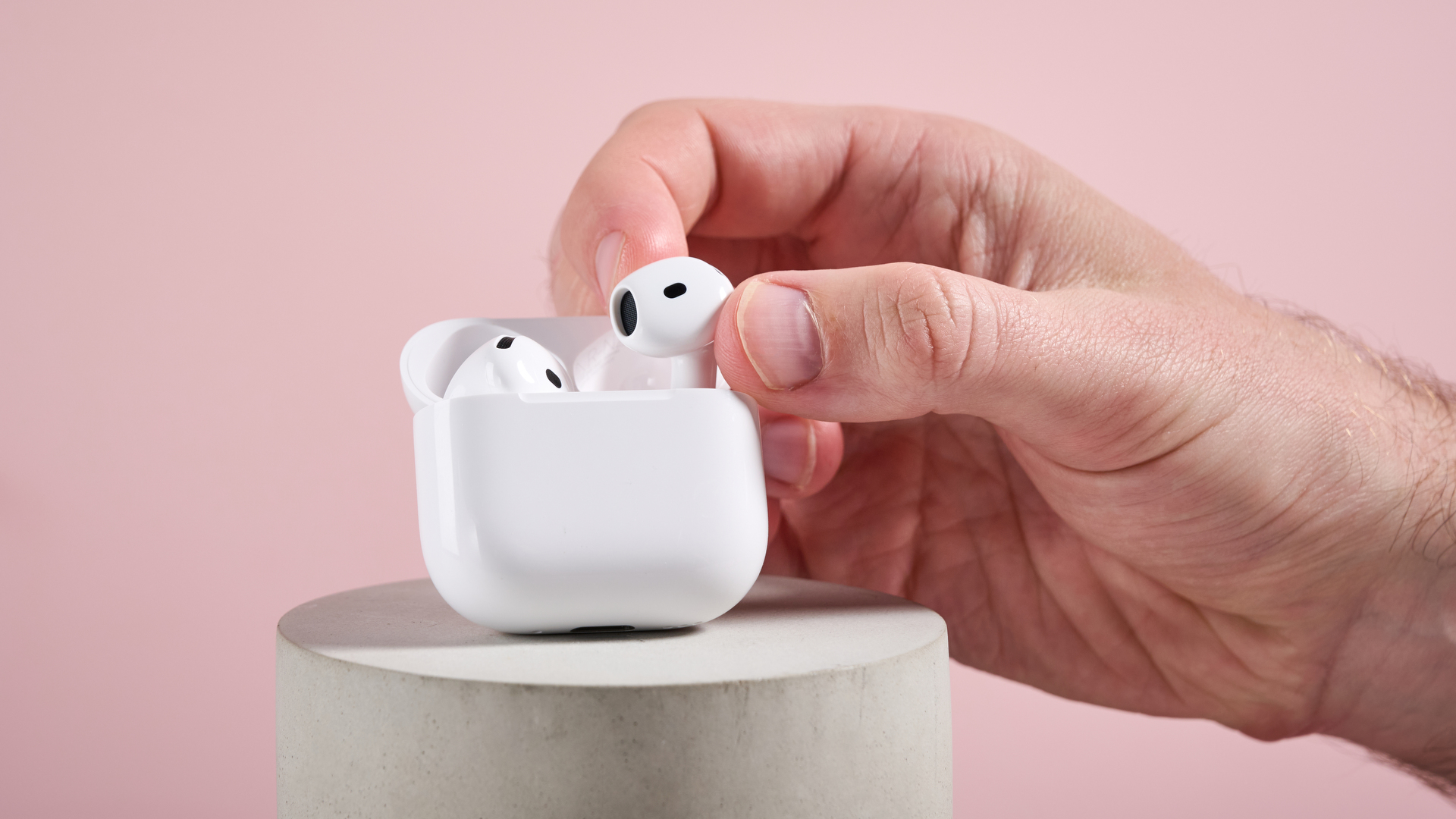
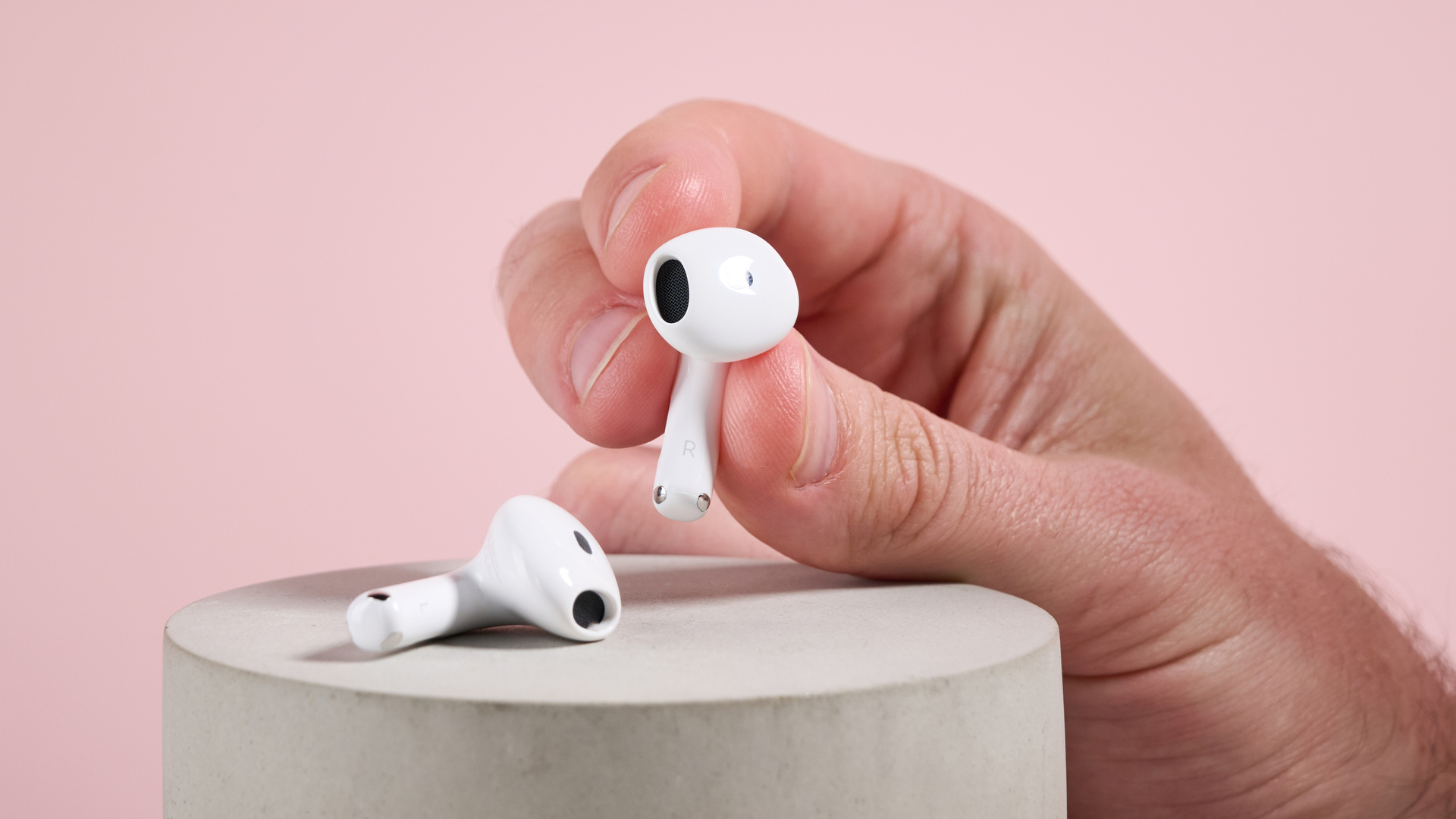

Specifications
Reasons to buy
Reasons to avoid
When I wrote my AirPods 4 with ANC review, the biggest problem they had was that their price was so close to the street price of the AirPods Pro 2. At that time, you could regularly find the AirPods Pro 2 for just $20-30 more than this model, and I felt that the only reason you wouldn't choose the higher-tier option was if you wanted an open-ear fit.
But now the AirPods 4 with ANC have started seeing good price drops of their own, and so they make more sense as a middle-ground option between the cheapest AirPods and the AirPods Pro 2.
For a start, the active noise cancellation really does make a difference when your surroundings get noisy. There's still a lot of sound leakage from outside, because the AirPods 4 with ANC lack the physical in-ear seal of AirPods Pro 2, but I was able to use them to listen to audiobooks or podcasts in situations where the cheaper AirPods were overwhelmed by exterior noise.
I also really missed having the precision location-tracking of the case that the AirPods Pro 2 offer, although the AirPods 4 with ANC at least have a speaker built in, so I could hear which of my coats they were hiding in the pocket of. I also missed having the swipeable on-ear volume controls that AirPods Pro 2 have – I really think that should be standard at this price.
But happily, I had basically no complaints about the sound quality. It's really full, and impressively detailed – playing the same tracks on the AirPods 4 with ANC and the AirPods Pro 2, I actually found it hard to discern much difference in a quiet environment. The AirPods Pro 2 have a bit more expressiveness in the mid-range, and an extra step of dynamic attack to transient sounds that means they have an extra level of 'realism' to them, and obviously, the noise cancellation is much more effective.
But overall, I think the AirPods 4 with ANC are a great-sounding pair of buds – in normal or Spatial Audio modes – and do the key AirPods quality-of-life stuff well, so if you prefer the outer-ear fit to in-ear, or as long as you find them for a significantly cheaper than AirPods Pro 2, I think they're a good buy.
AirPods Max in-depth verdict
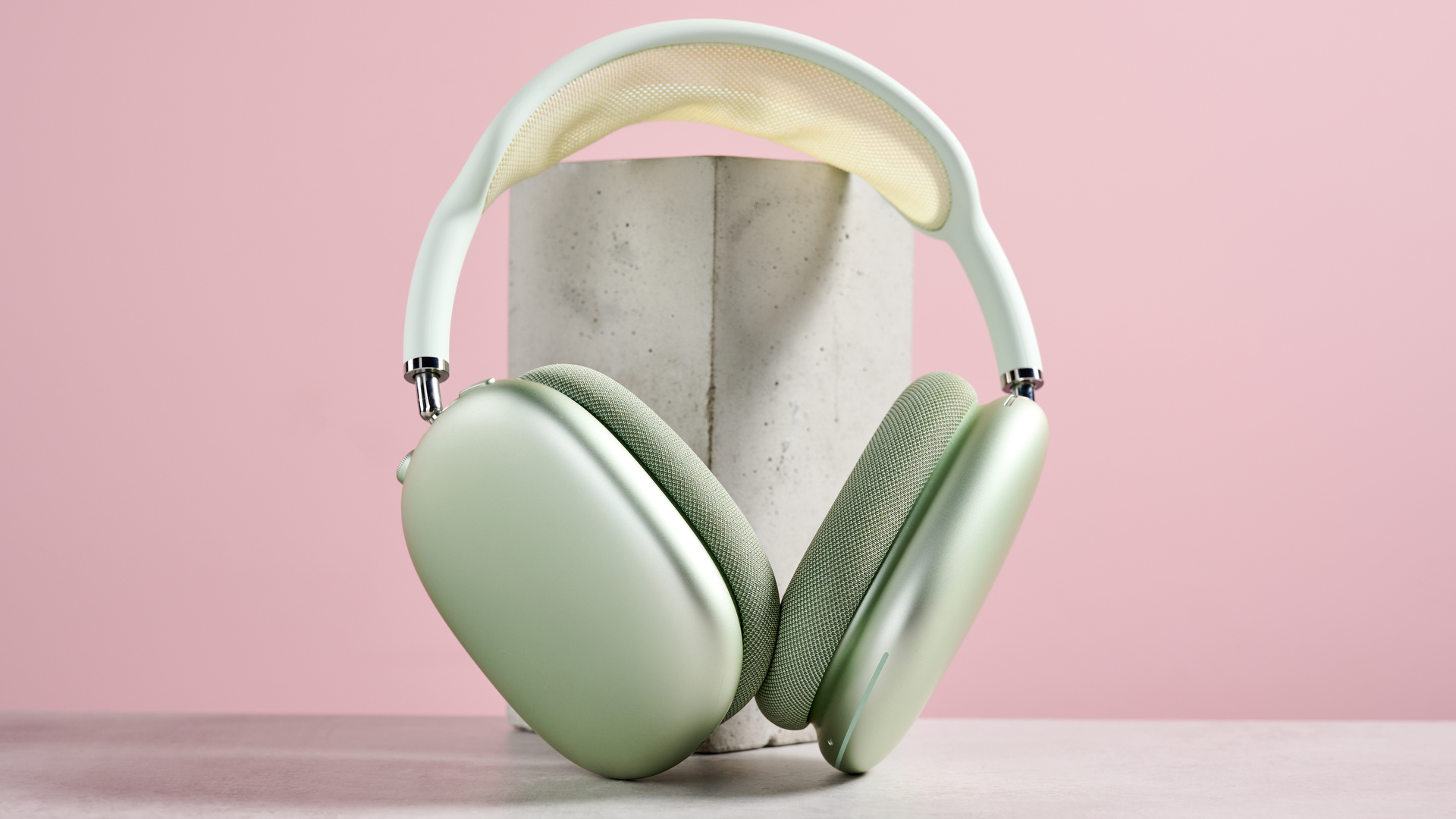
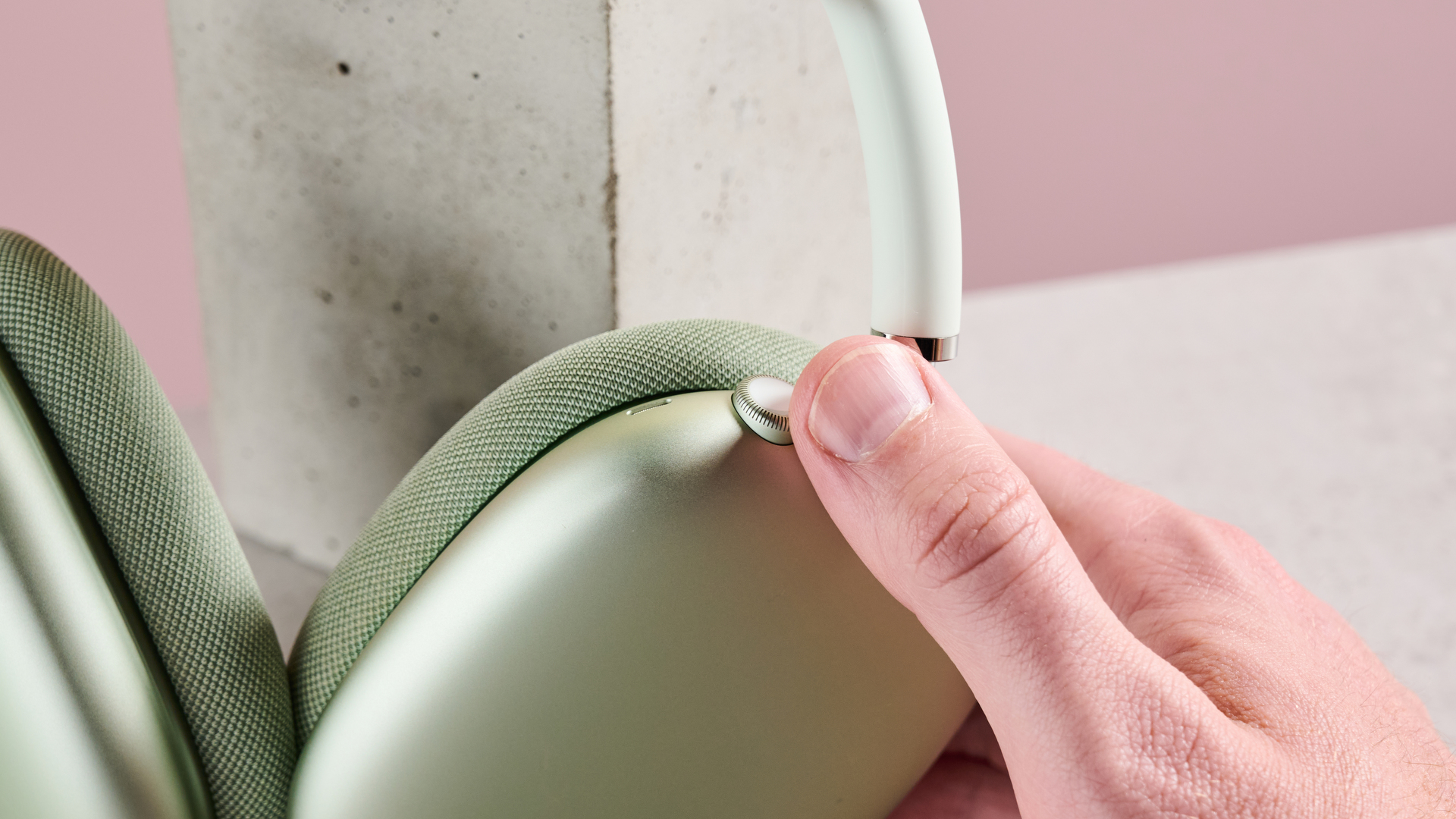
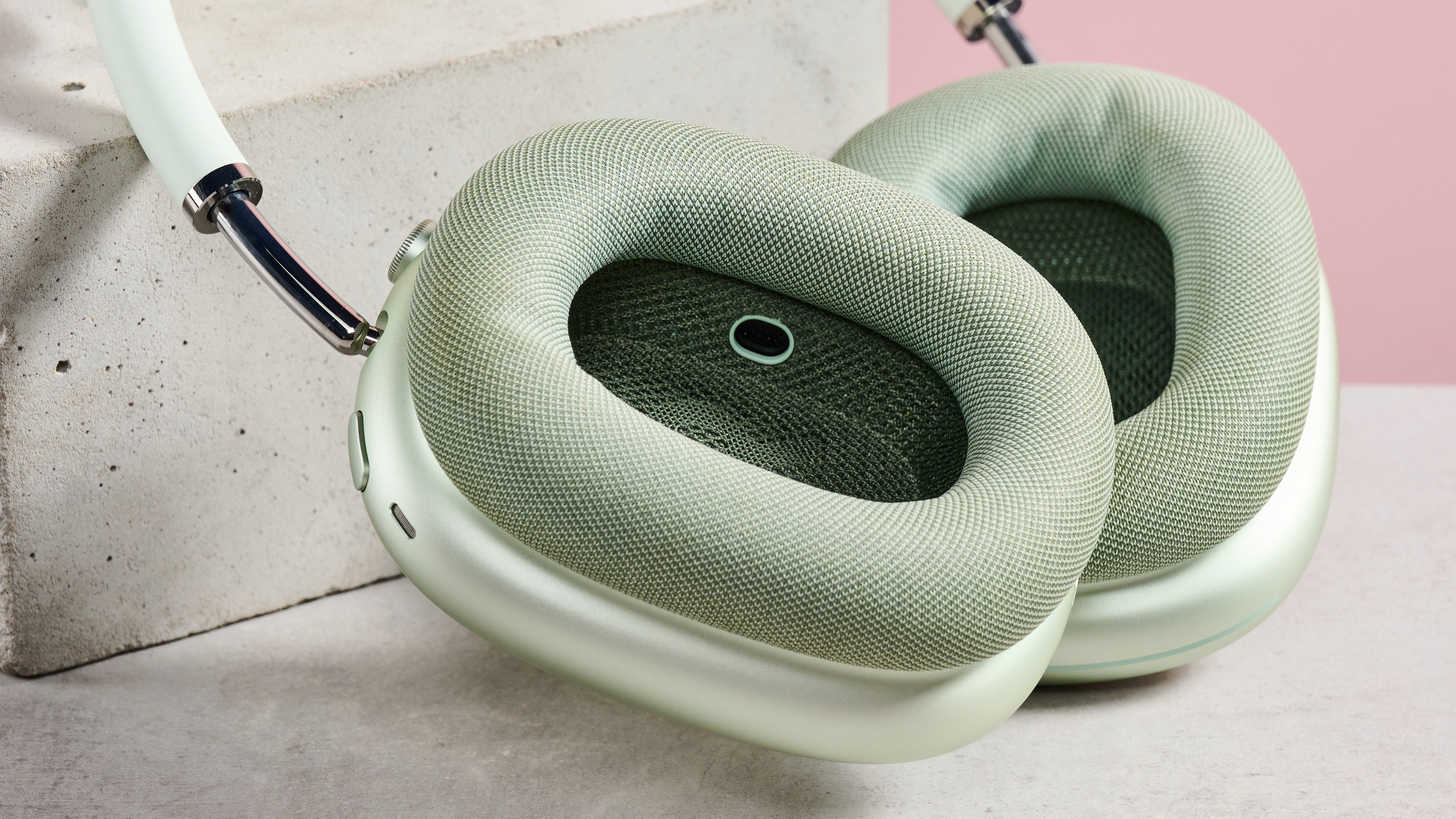
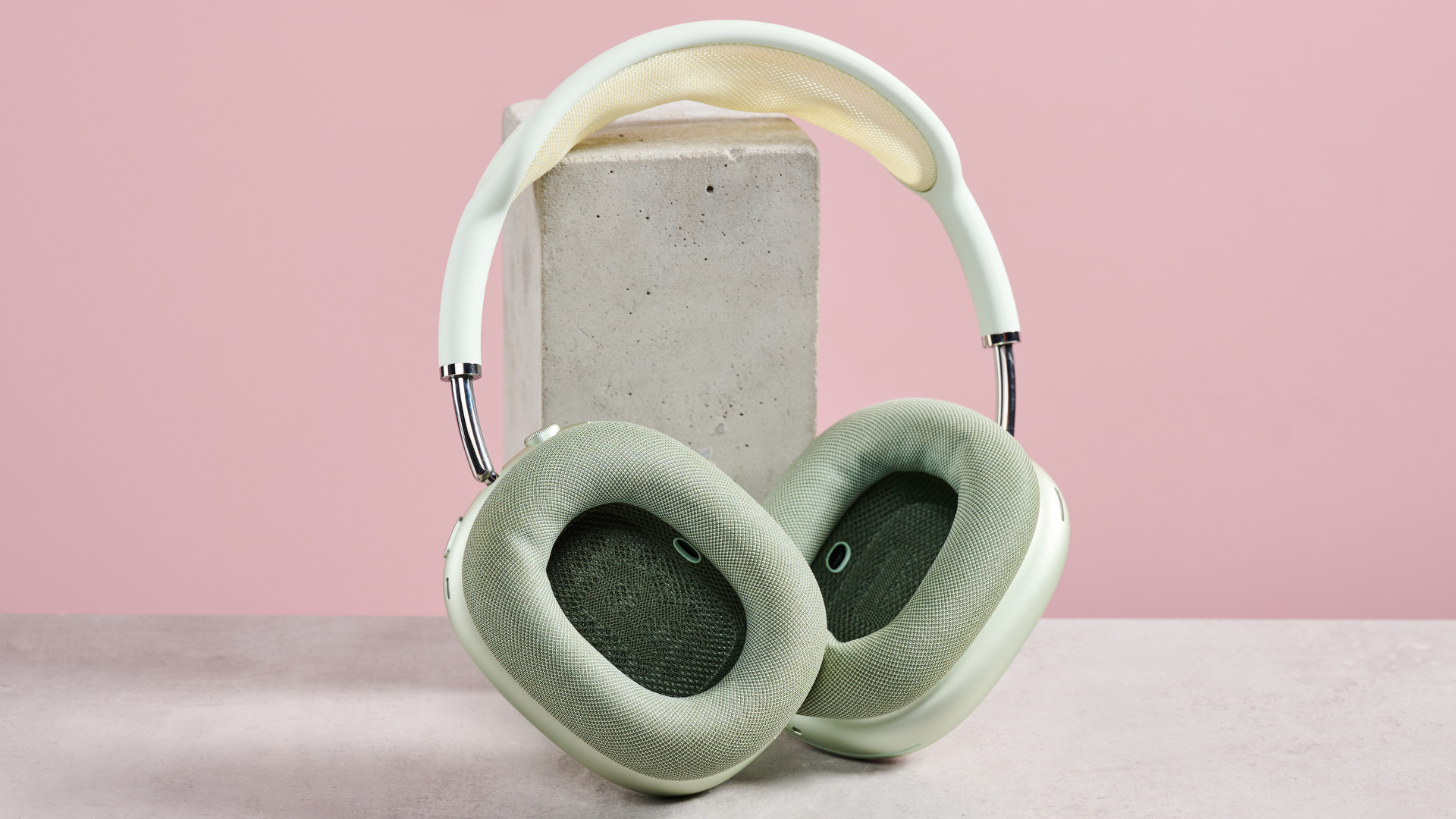
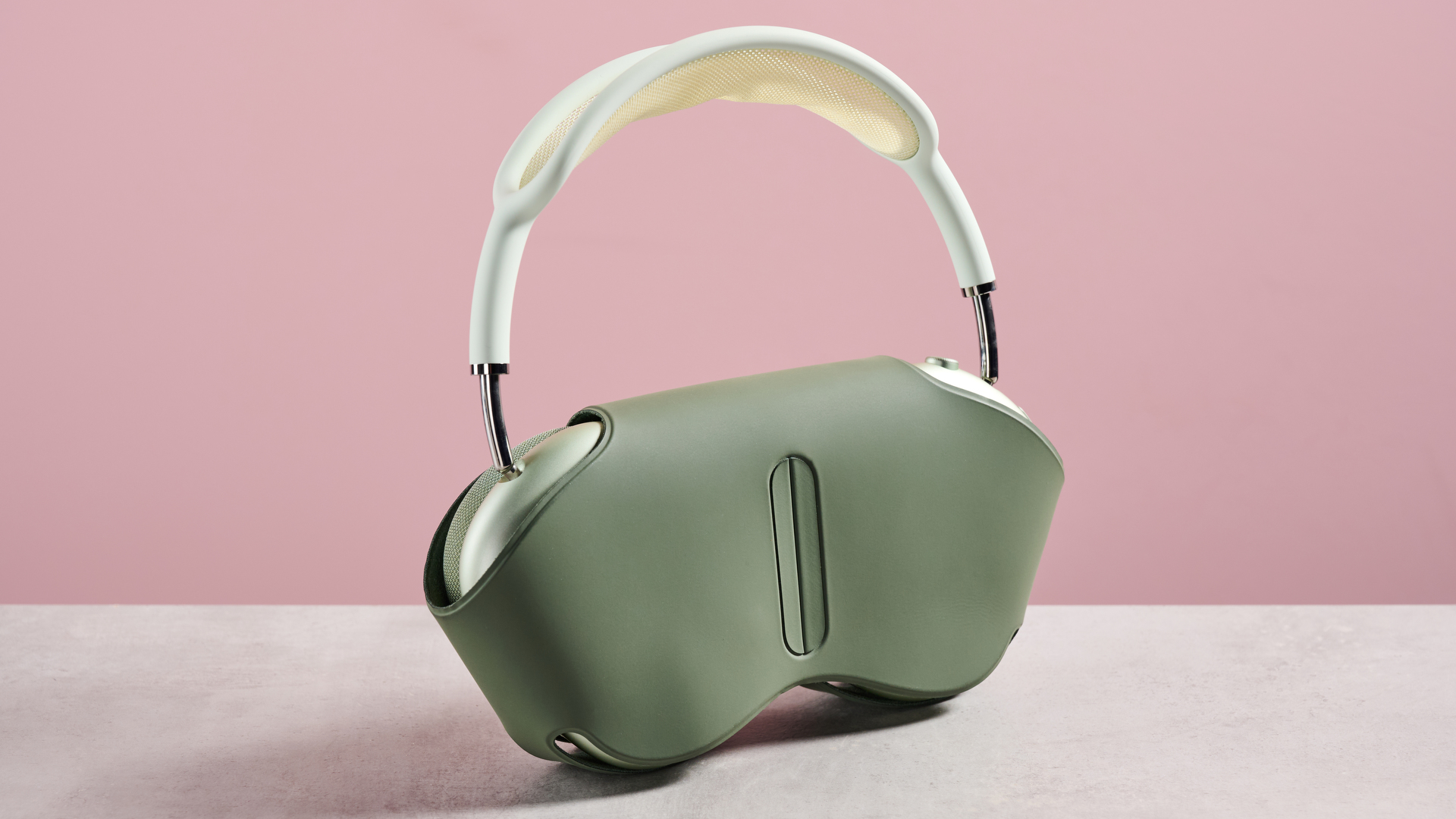
Specifications
Reasons to buy
Reasons to avoid
I've been using the AirPods Max since they launched in December 2020, and though I didn't write TechRadar's AirPods Max review, I gave them an extensive workout in basically every way possible. I used them for day-to-day listening in the office, I used them on long-haul flights for noise cancellation and spatial audio from my iPad, I used them for pandemic-era video calls… they were my main over-ear headphones for quite a while.
I came back to them so much mainly because of their impressively crisp and expansive sound, with an airy and natural feeling to the audio that's not easy to find in wireless headphones, and which is a clear step beyond what AirPods Pro 2 can do, both in terms of sound fidelity and the quality of active noise cancellation.
This dynamic and detailed sound was also a perfect pairing with spatial audio, which needs that kind of detail to convincingly recreate 3D sound – and I've loved watching movies with AirPods Max, from my iPad, iPhone and Apple TV 4K.
However, I do find myself less sure about recommending them these days. Their price has remained high even while the prices of (newer) excellent premium headphones falls. When the Bose QuietComfort Ultra Headphones came out, I found that I preferred the sound of those – as well as the lighter-weight fit – and these are now regularly discounted to hundreds of dollars or pounds less than the AirPods Max, despite being (in my opinion) slightly better headphones.
I mentioned the weight there, and it's definitely worth me making clear that unlike Apple's earbuds, which manage to be lighter than most of their peers, the AirPods Max are particularly heavy by wireless headphones standards. Their metal frame is a big part of it, and while I love how high-quality the build feels, it means the headphones need to apply a lot of clamping force on the head in order to keep stable. This can be a problem for glasses wearers, and some people generally don't like this anyway, although others find it very comfortable.
Another factor that reduces their value these days is that they're the only AirPods model using the H1 chip – all the earbuds now use the newer H2 chip, and we expect the H3 to appear in the AirPods Pro 3 before too long.
In practice, this means that while the AirPods Pro 2 (and now the AirPods 4) have received yearly updates that add new advanced noise cancellation or mic improvement features, the AirPods Max haven't. That's despite them being the most expensive model, and I find this frustrating.
Having said that, the addition of the USB-C port to the AirPods Max in 2024, and a subsequent software update in 2025, have given the AirPods Max a bit of a new lease on life, by adding lossless digital audio input. Our Audio Editor, Becky Scarrott, tried this mode out, and she found that it made a huge difference to the AirPods Max's sound.
So for audiophiles, the AirPods Max are not only the best-sounding AirPods wirelessly, they're now the only AirPods to offer true lossless audio support to match what Apple Music can provide – and they really make the most of it.
My history with AirPods and Apple tech
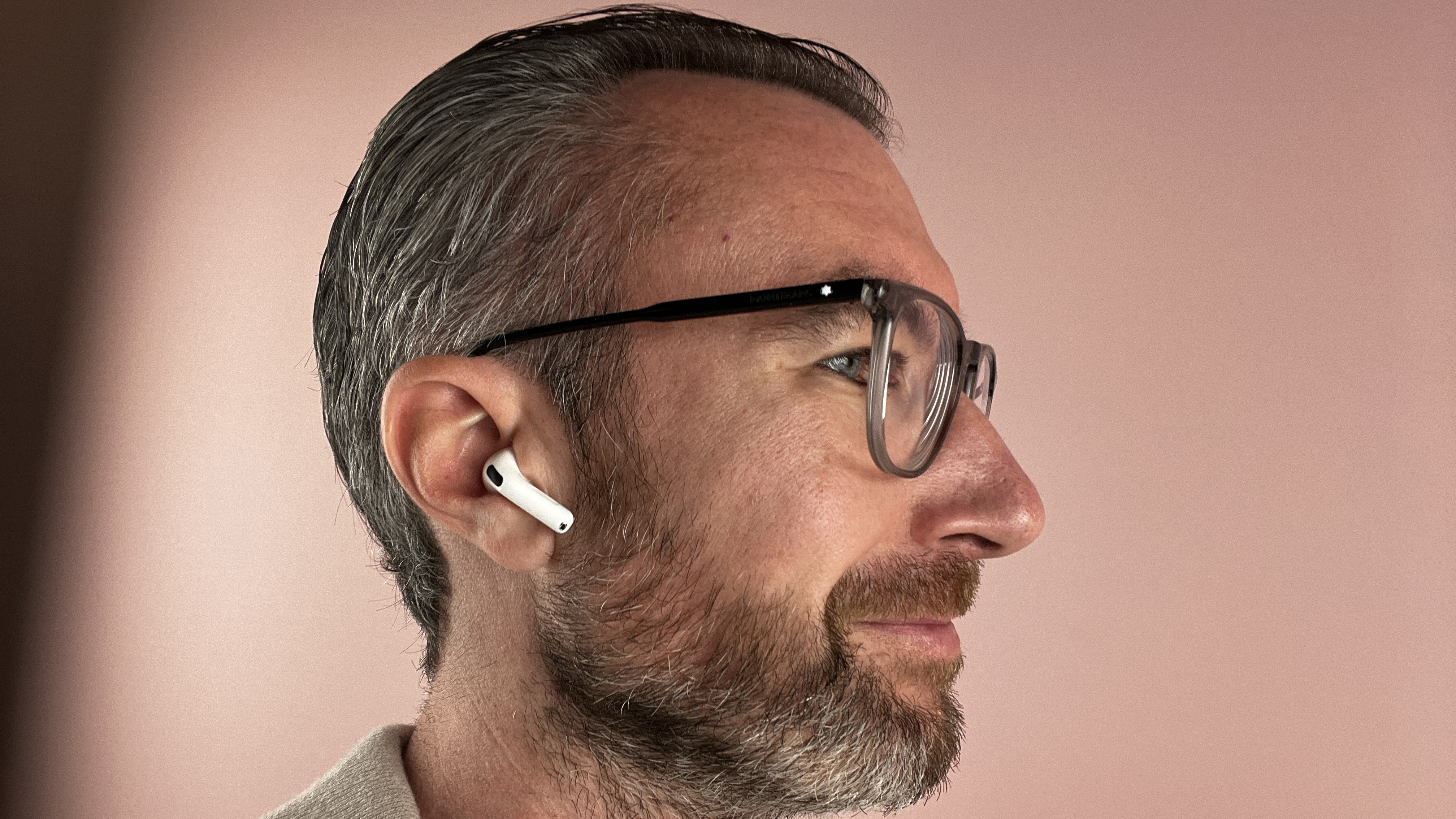
I've been covering Apple technology as a journalist since 2009, initially reviewing software on a freelance basis, and then working full time on a magazine dedicated to the iPhone and iPad – a job that included reviewing many options among the burgeoning selections of wireless headphones and earbuds. After that I worked on two different Apple-focused magazines, and reviewed countless Apple releases, from Macs to Apple Watches to accessories including EarPods wired headphones, and eventually AirPods.
I tested the first pair of AirPods when they launched in 2016, and compared them against the growing number of competitors that rapidly followed (the AirPods weren't quite the first true wireless earbuds, but they weren't far behind).
I remember that the sound quality of the AirPods was rapidly eclipsed by the competition – which was the case even after the second version appeared in 2018, but I was always prepared to recommend them to the right people, because from the start Apple nailed three things that competitors took years to fully match: rock-solid connectivity between the phone and both earbuds, super-simple setup, and a tiny case you could take everywhere with you.
It was with the first AirPods Pro in 2019, that, for me, AirPods really matured into a class-leading product more or less across the board. I compared them to products from the likes of Sony and Audio-Technica, and they stood up to those in terms of audio detail, dynamic range, and noise cancellation strength. They also put AirPods back on top of the innovation chart by introducing head-tracked spatial audio, which I've been a huge fan of for movies ever since it was introduced. And to cap it all off for the AirPods Pro, they were very competitively priced.
In 2020, I reviewed the AirPods Max when they came out, and I was very impressed with their detailed and broadly neutral sound, and top-tier noise cancellation. I loved a lot of the design as well. However. now that we're five years on, and there hasn't been a true second version, I can't say I feel as fondly about them – they're so high-priced, but are left behind when it comes to new features.
I tested the AirPods 3 at launch in 2021, but found them disappointing compared to the AirPods Pro – the sound was duller, and they lacked too many features while being too pricey. The 2018 AirPods 2nd Gen remained on sale, and people were happy to buy those for under $100, and the AirPods 3 just didn't offer enough of a reason to spend more, unlike the AirPods Pro.

Sign up for breaking news, reviews, opinion, top tech deals, and more.

Matt is TechRadar's Managing Editor for Entertainment, meaning he's in charge of persuading our team of writers and reviewers to watch the latest TV shows and movies on gorgeous TVs and listen to fantastic speakers and headphones. It's a tough task, as you can imagine. Matt has over a decade of experience in tech publishing, and previously ran the TV & audio coverage for our colleagues at T3.com, and before that he edited T3 magazine. During his career, he's also contributed to places as varied as Creative Bloq, PC Gamer, PetsRadar, MacLife, and Edge. TV and movie nerdism is his speciality, and he goes to the cinema three times a week. He's always happy to explain the virtues of Dolby Vision over a drink, but he might need to use props, like he's explaining the offside rule.